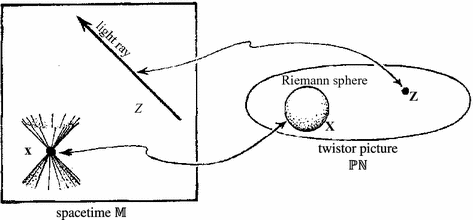This is the time of the year when young particle physicists usually want to go to school, more precisely, a “summer school” held in some pleasant location. These typically have a series of survey lectures on the hot topics of the subject, aimed at the level of advanced graduate students and postdocs. These days, the lectures are often available on-line in some form, so anyone interested in learning some more about currently active research topics can do so, even if they have to miss the summer travel aspect of the school.
Here’s a partial list of some of the larger such programs:
Theoretical Advanced Studies Institute in Elementary Particle Physics: String theory and its applications, Boulder, Colorado June 1-25
Summer school on structures in local quantum field theory, Les Houches, June 7-25
50th Cracow School of Theoretical Physics, Zakopane, Poland June 9-19
2010 European School of High-Energy Physics, Raseborg, Finland June 20 -July 3
Summer School on Mathematical String Theory, Blacksburg June 21-July 2
Cargese Summer School on String Theory: Formal Developments and Applications, Cargese, Corsica June 21-July 3
PASI School on Quantum Gravity, Morelia, Mexico June 23-July 3
Prospects in Theoretical Physics: Aspects of Supersymmetry, Princeton July 19 – July 30 (why Princeton as a location to travel to for the summer is a bit of a mystery…)
Cargese Summer School on Physics at TeV Colliders, Cargese, Corsica July 19-July 30
International School on Strings and Fundamental Physics, Munich July 25-August 6
PSI Summer School on Particle Physics: Gearing up for LHC Physics, Zuoz, Switzerland, August 1-7
SLAC Summer Institute on Neutrinos, Stanford, August 2-13
Clifford Johnson is blogging from the quantum gravity school in Morelia, where he’s shocked to find the “totally bizarre” situation that the students there aren’t very enthusiastic about string theory. He attributes this to their ignorance:
Here’s the really odd thing about all this … : While this is a school on Quantum Gravity, after talking with the students for a while one learns that in most cases the little they’ve heard about string theory is often essentially over 20 years out of date and almost always totally skewed to the negative, to the extent that many of them are under the impression that string theory has nothing to do with quantum gravity at all! It is totally bizarre, and I suspect it is largely a result of things that are said and passed around within their research community.. So there are a few students here and there who have some familiarity with strings, huddling together at times for warmth in a sea of miscommunication, misinformation, and strange preconceptions.
I find it extremely hard to believe that the students at this school are ignorant of claims that string theory is a unified theory including quantum gravity, more likely they’re just unconvinced and more interested in other approaches.
Lubos reacts to this by noting that Clifford is finally encountering reality:
Clifford Johnson seems to be surprised that almost all the students have been brainwashed by various anti-stringy misconceptions. Clifford has clearly been living outside the reality at least for 4 years, and so have many other serious high-energy physicists.
and then goes beyond Clifford, arguing that the problem is not just ignorance, but sub-normal intelligence:
There’s no string theory group in Mexico – another fact that shouldn’t be shocking given Mexico’s average IQ around 85. The IQ increment needed to go from non-stringy quantum gravity to string theory is around 20.



